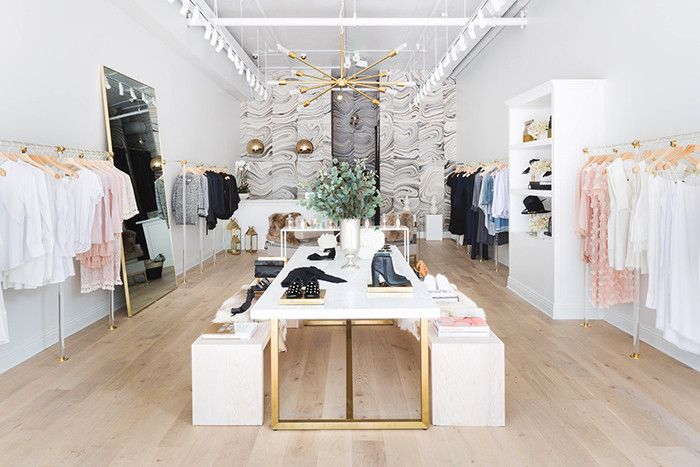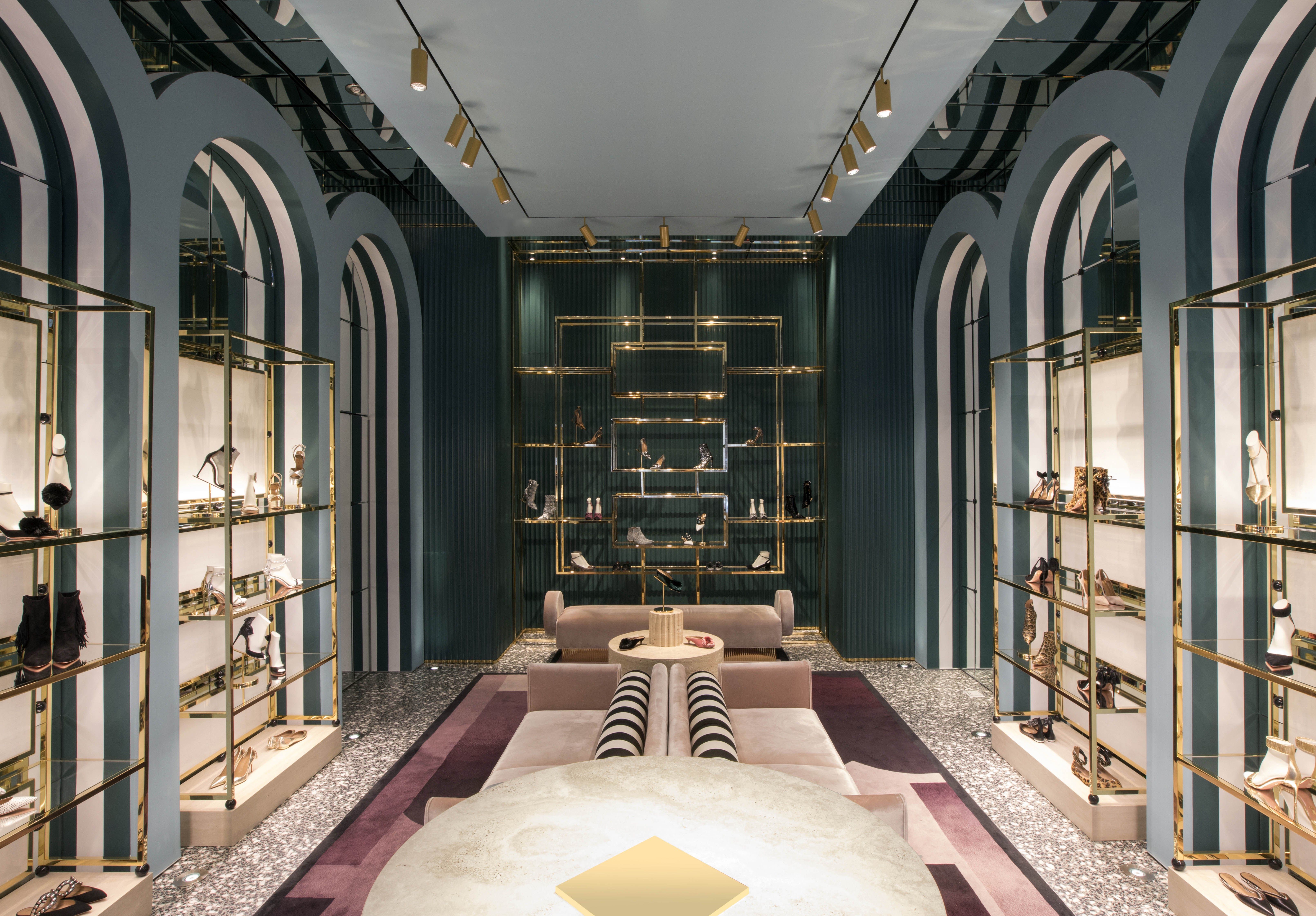A Beginner's Guide to Browsing the Boutique Fashion Scene
A Beginner's Guide to Browsing the Boutique Fashion Scene
Blog Article
A Deep Study the Globe of High-Fashion Runways: Comprehending Apparel as Art
Developers, much like skillful musicians, weave elaborate stories via fabric, type, and color, redefining and testing conventional standards beauty requirements. As we discover these sartorial eyeglasses, we must contemplate: what duty does style play in forming societal values, and how does it show the ever-changing tapestry of human feeling and identity?
The Advancement of Runway Reveals
The trajectory of path shows has actually changed substantially over the years, developing from exclusive sector events to exciting eyeglasses that blend fashion with art. Commonly, runway shows were intimate events, held in ateliers or small venues, primarily gone to by purchasers and market experts. These very early discussions concentrated on the garments' craftsmanship and commercial stability, using a direct and sensible display of seasonal collections.
As the garment industry expanded, the nature of runway programs began to alter. The 1970s and 1980s noted a turning factor, with developers seeking to differentiate themselves with more theatrical presentations. This era saw the increase of sophisticated sets, choreographed models, and thematic stories, heralding a new age where the path came to be an experiential platform. The shows transformed into a type of narration, where each collection shared a distinctive narrative or idea.
Recently, technology and social networks have further changed runway shows, making them easily accessible to an international target market. Livestreaming and digital systems have democratized fashion, permitting fanatics worldwide to witness these events in real-time (boutique fashion). This advancement shows a more comprehensive social shift, where high-fashion paths function as a vibrant junction of style, performance, and technology
Designers as Enthusiast Artists
Designers in the high-fashion sector have actually obscured the lines between functional garment production and the theoretical realm of art. By accepting creative disciplines such as sculpture, painting, and progressive installations, designers craft garments that challenge traditional fashion standards and boost them to art kinds.
Visionary designers attract ideas from a myriad of resources, including abstract art, historical referrals, and personal stories. They possess an one-of-a-kind capacity to envision and emerge ideas that push the limits of standard style, often redefining visual paradigms at the same time. This imaginative resourcefulness is showcased via remarkable shapes, ingenious materials, and intricate craftsmanship, which welcome visitors to experience fashion as more than simply wearable things.
Furthermore, the runway acts as a canvas for these musicians, where illumination, songs, and set design coalesce to create immersive experiences. These presentations are not simply screens of clothes however are coordinated efficiencies that evoke feeling and prompt idea, verifying the designer's function as a real artist in the contemporary social landscape.
Social Influences in Style
Cultural tapestry weaves its intricate patterns into the material of fashion, influencing developers globally. The dynamic interchange of cultural stories, practices, and symbols educates and influences collections that poise high-fashion runways.
The impact of society on style is frequently seen in the reinterpretation of conventional garments and patterns. For example, the usage of Japanese kimonos, Indian saris, or African prints in modern fashion shows a mix of social authenticity and contemporary aesthetic appeals. Developers such as Valentino's Pierpaolo Piccioli and Alexander McQueen's Sarah Burton have actually been recognized to incorporate rich cultural themes right into their couture collections, translating history into wearable art.

Development in Material and Design
Technology in material and style continually reshapes the landscape of high-fashion, pressing boundaries and redefining opportunities. Designers are significantly checking out the assimilation of innovation, such as 3D printing, which allows for the creation of complicated frameworks that were previously unbelievable.
Moreover, sustainability has become a critical style in fabric development. The garment industry is experiencing a rise in making use of environmentally friendly materials, acquired from recycled plastics, natural fibers, and also naturally degradable elements. These developments not only offer new textures and appearances however also address vital ecological issues. Developers are embracing these materials to craft garments that are both aware and visually striking of their ecological footprint.
In regards to design, progressive silhouettes and speculative forms are continually reinventing the runway. By including non-traditional products and innovative methods, developers grow garments that obscure the line in between style and art, setting new standards for imagination and expression in the high-fashion ball.
Impact of Fashion on Society
Fashion possesses an extensive influence on society, functioning as both a representation of cultural identity and a driver for social adjustment. With its evolution, style has actually mirrored societal shifts, encapsulating the zeitgeist of different ages. The flapper dresses of the 1920s embodied a newfound feeling of females's liberation, while the bold prints of the 1960s echoed the revolutionary spirit of the time. High-fashion reference paths, in certain, function as platforms for challenging norms and redefining charm requirements. Developers utilize more information these locations to address pressing social issues, from sustainability to variety, consequently shaping public discourse.
In addition, style has the power to bridge cultural spaces, cultivating understanding and gratitude among diverse teams. As globalisation increases, the cross-cultural exchange of fashion concepts ends up being progressively considerable, advertising inclusivity and diversity. The surge of streetwear, originating from metropolitan subcultures, shows how fashion can go beyond socio-economic boundaries, giving individuals a way of self-expression and empowerment.
Essentially, style is not just regarding visual appeals; it is a dynamic force that affects values, attitudes, and social development (boutique fashion). By continually interacting with social and cultural currents, style continues to be an essential part of the cumulative human experience

Verdict
High-fashion paths work as dynamic fields where clothing goes beyond functionality to end up being an expressive art form. Designers, comparable to visionary musicians, manage collections that show identification, feeling, and social narratives, challenging conventional looks. The fusion of cutting-edge textile and style, coupled with fancy set designs, lights, and recommended you read songs, creates immersive experiences that commemorate multiculturalism. This intersection of style and creativity not only captivates target markets around the world yet also affects social perceptions and advertises a deeper admiration for cultural variety.

Cultural tapestry weaves its intricate patterns right into the textile of style, affecting designers internationally.Style possesses a profound influence on society, serving as both a reflection of cultural identity and a stimulant for social modification.
Report this page